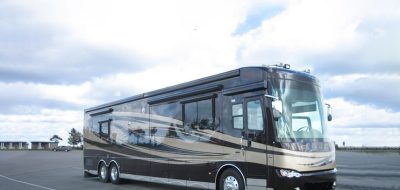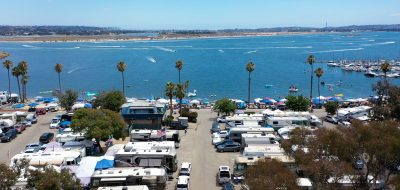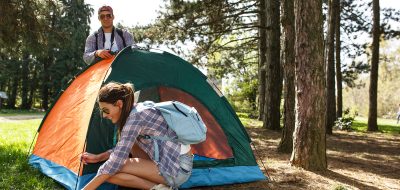Congaree National Park is a relatively unknown park—a hidden jewel in the national park system.

Congaree National Park provides a sanctuary for plants and animals, a research site for scientists, and a place for you to walk and relax in a tranquil wilderness setting amidst giant hardwoods and towering pines. © Rex Vogel, all rights reserved
The National Park Service, Trust for Public Land, and Friends of Congaree Swamp, and others recently celebrated Congaree National Park’s 35-year history and the park’s acquisition of 1,840 acres of Riverstone property, The Times and Democrat reported.
“The Riverstone property, which connects the eastern and western sections of the park, was Congaree National Park’s highest priority for acquisition. We are pleased to be celebrating this latest addition to the park during our 35th anniversary year,” said Tracy Swartout, Park Superintendent.
In June 2011, the final 434 acres of the Riverstone property were protected, completing a multi-year effort to conserve the 1,840-acre tract, which was one of the largest properties in the expansion area approved for the park in 2003. The important Riverstone acquisition creates a contiguous corridor of 42,000 acres of protected lands along the Congaree, Wateree, and upper Santee rivers.
The Trust for Public Land (TPL) worked in partnership with Friends of Congaree Swamp and numerous local and national organizations to protect the property. Friends of Congaree Swamp has long advocated for the acquisition of this important tract in order to protect vital habitat, connect the eastern and western portions of the Park, and enhance public recreation and education.
The Times and Democrat reports that visitors to this new area of the park will be able to follow the route of the original road to the historic Bates Ferry landing on the banks of the Congaree River. Along the way, visitors will find an impressive bald cypress with a 29-foot circumference, one of the largest trees in the entire park. Nowhere else in the park will visitors find easier hiking access to the Congaree River and to some of the park’s most impressive natural resources.
Congaree National Park is also important to the history of Richland County and central South Carolina. Congaree National Park annually co-hosts an event called SwampFest! with South East Rural Community Outreach that draws thousands of enthusiasts to the park and Lower Richland County in celebration of the region’s rich cultural heritage.

Activities at Congaree National Park include hiking, primitive camping, bird watching, picnicing, canoeing, and kayaking. © Rex Vogel, all rights reserved
The park also sponsors an innovative interpretive program called the Congaree Campfire Chronicles, where guides lead visitors along the park’s boardwalk while volunteers re-enact the pre-history and history of the park.
Congaree National Park preserves the largest intact tract of old-growth bottomland hardwood forest in North America. To walk here is to walk among ancient trees of record size. A storehouse of natural diversity, the forest encompasses hundreds of species of plants and animals.
It is designated as an International Biosphere Reserve and Wilderness area. Beauty and tranquility reign supreme in the midst of this natural sanctuary.
Before Congaree became the first national park in South Carolina in 2003, it was known as the Congaree Swamp National Monument. The Congaree River flows through the marshy region, which contains the largest intact remains of floodplain forests on the continent. The park is about 20 miles from Columbia, the capital, which is in central South Carolina.
The Congaree River and Wateree River are key attributes of the national park. American Rivers and a coalition of local organizations have designated 50 miles of Congaree River from Columbia to the national park as a Blue Trail and National Recreational Trail.
Did You Know?
In North America, only the conifer forests of the Western U.S. coastal region are substantially taller. East of the Mississippi, just a few patches of white pine and some cove forests in Great Smoky Mountains National Park are taller. When compared to all of the world’s forests, Congaree is among the tallest.
Details
Congaree National Park
Mailing Address: 100 National Park Road, Hopkins, SC 29061-9118
Directions: From I-77, Exit 5, turn onto SC-48 East (Bluff Road), travel southeast approximately 14 miles toward Gadsden and turn right onto Mt. View Road for 0.8 miles; turn right onto Old Bluff Road and travel 0.6 miles to the large park entrance sign, turn left onto the park entrance road and proceed one mile to the Harry Hampton Visitor Center parking lot.
Entrance Fee: No charge entrance or tour fees
Operating Hours: Open 24 hours a day, 7 days a week
Phone: (803) 776-4396
Website: nps.gov/cong
The Trust for Public Land (TPL)
The Trust for Public Land (TPL) is a national, nonprofit land-conservation organization that conserves land for people to enjoy as parks, gardens, and other natural places, ensuring livable communities for generations to come. Established in 1972, TPL is the only national nonprofit working exclusively to protect land for public enjoyment and use.
Website: tpl.org
Worth Pondering…
Wilderness needs no defense, only more defenders.
—Edward Abbey
You May Also Like
- 2012 Mobile Mardi Gras RV City Filling Up Fast
- RV Space Still Available for Winter Texans
- 2012 Super Bowl Parking: More People Are Buying
- Speed Bumps Delay Arizona KOA
- Recreation Nation Introduces Denver Mattress Hospitality Euro Top Mattress at Quartzsite RV Show
- RVNN.TV Expands Distribution with Roku Streaming Video Players
If you enjoy these articles and want to read more on RV travels and lifestyle, visit my website: Vogel Talks RVing.






Colorado Camping
Really a wonderful place to camp judging from this article, I am going to have to go there sometime!
butterbean carpenter
Howdy Rex,
Thanx, for the great article…